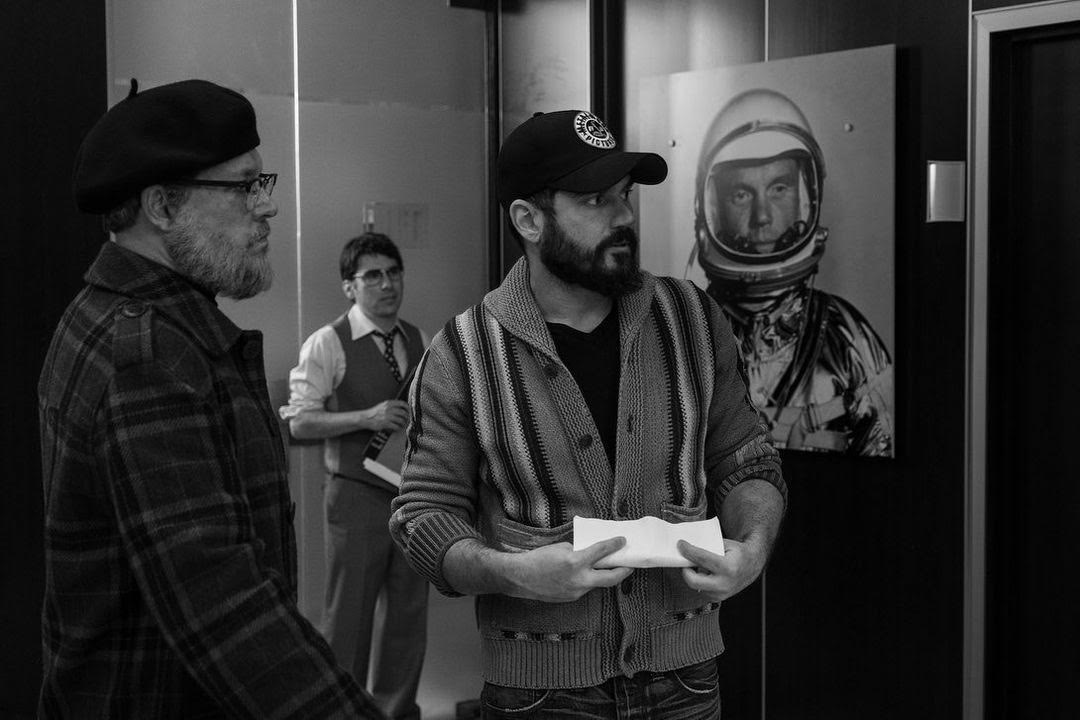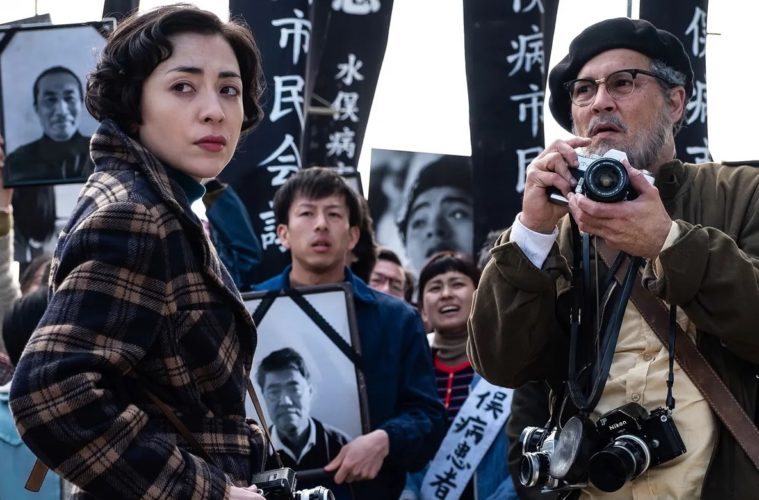Minamata just got recognized as a fan favorite at the Oscars and it’s received a predominance of positive reviews for star and producer Johnny Depp (even while he deals with court drama and some media questioning his character in the wake of his battles with ex-wife Amber Heard). The film, which just became available via Video On Demand (VOD), has defied expectations and won fans across the world.
Director Andrew Levitas’ biopic documents the gripping tale of Eugene Smith, an American photographer who shot and exposed mercury poisoning in Minamata, Kumamoto, Japan in 1971. The film dealt with theatrical delays due to COVID-19 and a very limited theater engagement. But now that it’s available for streaming, it can finally be appreciated for the powerful piece of activist cinema it is, and for Depp‘s decidedly different kind of role. LA Weekly spoke with screenwriter David K. Kessler who initially got the rights to the story and created the screenplay, about the process of telling the tragic story in a film.
LA WEEKLY: What inspired you to buy the rights to Minamata (based on the book of the same name) and write a screenplay? What were your hopes for it then?
DAVID K. KESSLER: I had been familiar with Smith’s famous photo, “Tomoko in the Bath, since my days at Parsons School of Design. I just didn’t realize it was taken in the 1970s—like many others, I mistakenly thought it was a picture from Hiroshima in 1945. When I stumbled on the story behind the photo and Smith’s personal journey and the Minamata book, written by Smith and his wife, Aileen. I was compelled to get the rights (which took nearly two years) and write it on spec.
Aileen lives in Japan, so I reached out via a website she has regarding licensing the Minamata photos in January of 2011 and 2012. She only replied in 2012. She had been down this road before with Wayne Wang and Anthony Hopkins in the late ’80s/early ’90s and others so it took some convincing, especially since my background was not in drama, it was in comedy scripts and stand-up. She had a lot of concerns about how Gene and she, the victims, and the other residents of Minamata would be portrayed. It was quite a heavy lift to win her trust and we had many email exchanges and midnight Skype calls in those 23 months or so.
I hoped the screenplay would get made —versus being a really good writing sample—and, miracles of miracles, it got made—and with one of the greatest actors of our time.

MINAMATA – From left: Johnny Depp, David K. Kessler and Andrew Levitas on the set. (Photo by Larry Horricks)
How did Johnny Depp learn about it? What clicked for him to take on the roles of lead actor and producer?
The script landed me a manager and she sent it to Depp’s company. They initially passed on it but then months later, called back on a Friday evening and wanted to have a meeting on Monday. It turned out Depp knew of Smith’s work and reputation—he had been friends with the late photographer Mary Ellen Mark who had taken classes with Smith in the 1960s and had plied Depp with stories about him.
Initially, Depp’s company just developed the project as producers—I was informed that he wanted to star (in addition to producing) much later on. There may have been internal discussions about him starring, but I wasn’t aware of that. I didn’t meet Depp until we were on set in Serbia in January 2019.
What was it like for you to work with Depp as one of the screenwriters and producers? He’s gotten a lot of stellar reviews and many have said it’s been his best film performance. What was it like to see him transform into the photographer Eugene Smith?
He’s astonishing in it and looks so much like Smith in the film. I had the pleasure of being an extra in a scene that takes place at LIFE magazine and I watched him over the course of eight-plus hours find the meaning in the words, connect with those words and connect with Bill Nighy, who plays LIFE’s editor (and has a long history with Depp, having been in the Pirates movies together). It was like watching an acting master class. He was even called “Gene” on set. I have one of the call sheets and it says “Gene Smith played by Gene Smith.” And Andrew Levitas gave great direction in that scene and in the whole picture overall (and this is only his second feature film).
Depp has been in litigation for the past few years. Did that affect the project?
There were domestic distribution issues of the film that were out of my purview but with millions of victims of pollution around the world in desperate need of attention, luckily the film did have a wide release in Asia, Eastern Europe, the EU and a limited theatrical one in the States, as well as great reviews. Covid was also a factor.
How did it feel when Minamata was voted one of the Fan Favorites at the Oscars and a clip of the film played onscreen at the Academy Awards show?
The Oscars were very exciting as I didn’t think they were going to show a clip—I thought someone at the very end of the show was going to read off the fan favorite titles or they’d just have a graphic of the titles and circle the winner or something. It blows my mind that everyone in that rood—and who watched at home—heard words I wrote and saw moments from the film that would never have existed without my work.
Has there been an impact on your career yet from Minamata? What’s next for you?
I’ve gotten a bit of reputation as the “Script Doctor for Broken Biopics,” which has been a great niche for me as I love true stories and especially ones that may have been lost to history. I recently worked on Adidas vs Puma —the story of the two brothers who founded those two iconic brands spanning over seven decades.
The film is now available to watch via Video On Demand on Apple TV/iTunes. What are your hopes for this part of the film’s journey?
My hope is that more people will know of the film and what “Minamata” means—as a place, as a disease—and know what its residents went and still go—through.
Advertising disclosure: We may receive compensation for some of the links in our stories. Thank you for supporting LA Weekly and our advertisers.

